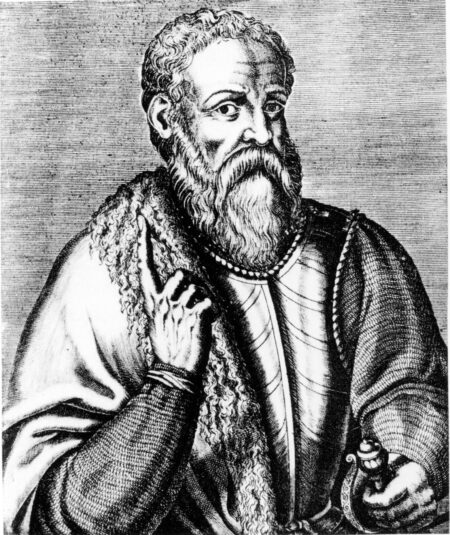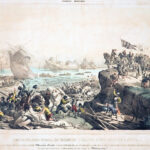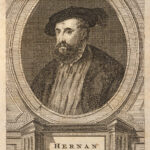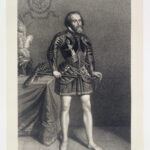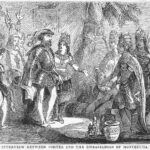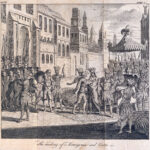Hernán Cortés
Explorer
Age of Discovery
Quick Facts:
Hernán Cortés was the Spanish conquistador responsible for conquering the Aztec Empire and building Mexico City which secured Spain’s position in the New World.
Introduction
With superior firepower, 600 Spaniards, a dozen horses, and thousands of native allies, Hernán Cortés conquered Mexico for Spain. This also marked the fall of the Aztec Empire. His conquest enabled Spain to create a stronghold and colonies in the New World. From a young age, Cortés sought wealth and adventure. History remembers him as a fierce conquistador (Spanish for “conqueror”). Despite his reputation, he opened the door for further exploration and conquest to the south and north
Biography
Early Life
Hernán (or Hernándo) Cortés was born in 1485 in the village of Medellín, located in the Estremadura province of Spain. His parents were Martin Cortés de Monroy and Catalina Pizarro Altamirano. Cortés was a distant cousin to Francisco Pizarro, the explorer who conquered the Incan empire in Peru. Cortés’ family was noble but not extremely wealthy. As a young child, Cortés was frequently ill, but his health improved when he was a teenager. In 1499, at the age of 14, he was sent to the University of Salamanca to prepare for a law career. However, Cortés eventually grew tired of his studies and after two years dropped out of school and returned home. Cortés wanted a life of action, and was fascinated by the tales of gold and riches in the New World. He signed up with an expedition to the New World led by Nicolás de Ovando, who was the governor of Hispaniola. But an accident from a fall which buried him under rubble severely injured his back.1 So he could not sail with Ovando’s fleet.
Talk of the New World and the allure of wealth continued to captivate young Cortés. In 1504, he sought passage on a ship to Santo Domingo, Hispaniola (modern day Dominican Republic). Cortés began farming in the Spanish colony, which brought him much wealth, and owned several native slaves. He finally got his first taste of exploration when he joined a mission under led by Diégo Velasquez in 1511. When he returned, he promised to marry Catalina Suarez, the sister of his friend Juan Suarez, but backed out at the last minute. Velasquez, now governor of Cuba, imprisoned Cortés for not upholding his promise.2 Eventually, Cortés agreed to marry Catalina, but relations between Velázquez and Cortés remained tense.In 1518, appointed Cortés to lead an expedition to conquer the interior of Mexico. He then withdrew the order because he grew suspicious of Cortés’ strong will and thirst for power. Cortés disobeyed Velasquez and set out for Mexico in 1519 to begin his invasion.
Voyages
Principal Voyage
In 1519, Hernán Cortés left Cuba with about 600 men, and set out for the Yucatan region of Mexico.3 He first arrived in Cozumel, and began to explore the land for colonization. He encountered natives, and their large pyramid. He noticed the blood stains and human remains, and learned that this pyramid was used for human sacrifices to their gods.4 Appalled, Cortés began his efforts to convert the natives to Christianity. He tore down their idols and replaced them with crosses and statues of the Virgin Mary. Cortés relied on native translators and guides to communicate with the natives, and travel the land. Soon after, Cortés and his men sailed on and landed at Tabasco. Here, Cortés and his men clashed with the natives. On March 25, 1519, in the Cintla Valley, the two sides fought in a battle known as the Battle of Cintla. The natives were no match for the Spanish soldiers weaponry and armor. 800 Tabascans were killed; only 2 Spanish men were killed.5 The Tabascans pledged their loyalty to Spain, and gave Cortés gold and slave women.
One of the chieftains gifted a slave woman to Cortés named Malinche. She was bilingual so she spoke both Aztec and Mayan languages, which made her very useful to Cortés. She eventually learned Spanish, and became Cortés’s personal interpreter, guide, and mistress. They had a son named Martin. Having conquered the Tabascan people, Cortés moved up the coast to Tlaxcala, a city of the mighty Aztec empire. The Aztecs were not always popular rulers among their subjected cities. When Cortés learned of this, he used it to his advantage. He met with Aztec ambassadors, and told them he wished to meet the great Aztec ruler Montezuma. Xicotenga, a ruler in the city Tlaxcala, saw an ally in Cortés, and an opportunity to overthrow the capital city of Tenochtitlán. They formed an allegiance, and Cortés was given several thousand warriors to add to his ranks. By this time, Cortés’ men were beginning to grumble about Cortés. He continued ignoring Velázquez’s orders to return to Cuba, and the men felt he was overstepping his authority. Afraid his men would leave, Cortés destroyed all the ships.6 With nowhere for the men to go, they followed Cortés onward to Tenochtitlán.
Subsequent Voyages
Cortés and his men marched to Tenochtitlán. They reached the capital of the Aztec empire on November 8, 1519.7 The ruler of the Aztec civilization was Montezuma II. Montezuma, though uncertain of the Spaniards’ intent, welcomed them graciously. He gave them a tour of his palace, and they were given extravagant gifts. This fueled the Spaniards’ greed and relations turned hostile shortly after. Cortés took Montezuma captive and the Spaniards raided the city. Montezuma was murdered shortly after from being stoned by his own people.8 In 1520, Spanish troops had been sent to Mexico to arrest Cortés for disobeying orders. He left Tenochtitlán to face the opposing Spaniards. After defeating them, Cortés returned to the Aztec capital to find a rebellion in progress. The Spaniards had been driven from the city. Cortés reorganized his men and allies, and seized control of neighboring territories around the capital. They regained control of the city by August of 1521. This marked the fall of the Aztec empire. Cortés had seized control of Mexico for Spain. Cortés was named governor, and went on to establish Mexico City, built on the ruins of the fallen Aztec capital.
Later Years and Death
Several years after his conquest of Mexico, Cortés endured many challenges to his status and position. He had been appointed the governor, yet was removed from power after returning from a trip to Honduras in 1524. Cortés went to Spain to met with the Spanish king in order to reclaim his title, but never gained it back. He returned to Mexico after his failing with the king and partook in several more expeditions throughout the New World. Cortés retired in Spain in 1540. He died seven years later on December 2, 1547 at his home in Seville from a lung disease called pleurisy.9
Legacy
Hernán Cortés remains one of the most successful of the Spanish conquistadors. He was a hero in the 16th century, but history remembers him differently. He had many conquests during his life. But he is perhaps most known for his conquer of the Aztec Empire in 1521. He enslaved much of the native population, and many of the indigenous people were wiped out from European diseases such as smallpox. He was a smart, ambitious man who wanted to appropriate new land for the Spanish crown, convert native inhabitants to Catholicism, and plunder the lands for gold and riches. However, we still recognize his role in history. He helped oversee the building of Mexico City, which is still Mexico’s capital today. He opened the door for further exploration and conquest of Central America to the south, and eventually led to the acquisition of California towards the north.
Images
- Print showing Cortes sinking his fleet in November 1519, before marching onward to attack Montezuma’s Aztec empire. The Mariners’ Museum 1944.0062.000001
- Print engraving of Spanish explorer and conqueror, Hernan Cortes. The Mariners’ Museum G160 .S6 Rare
- Translated from bottom of print: “Portrait taken from the painting that is kept in The Purest Conception Hospital in Mexico.” The Mariners’ Museum N7103 .I19 Rare OO
- Print of a scene between the Cortes and the Spanish conquistadors and the Ambassador to Emperor Montezuma. The Mariners’ Museum F1230.C8 A1 Rare
- Print showing the meeting between the two leaders: Spanish conquistador Hernan Cortes; and Montezuma, emperor of the great Aztec Empire. The Mariners’ Museum G160 .S6 Rare
- Map showing various explorers’ routes, including Cortes in New Spain (present day Mexico) The Mariners’ Museum from F799 .B69 Rare
Endnotes
- Patricia Calvert, Hernándo Cortés: Fortune Favored the Bold (New York: Benchmark Books, 2003), 11.
- Buddy Levy, Conquistador: Hernán Cortés, King Montezuma, and the Last Stand of the Aztecs (New York: Bantam Books, 2008), 8.
- Fergus Fleming, Off the Map: Tales of Endurance and Exploration (New York: Grove Press, 2004), 63.
- Levy, Conquistador, 12.
- Levy, Conquistador, 26-27.
- Thomas Streissguth, Hernán Cortés, (Mankato: Capstone Press, 2004), 12.
- Jeff Donaldson-Forbes, Hernán Cortés (New York: The Rosen Publishing Group, 2002), 21
- Donaldson-Forbes, Hernán Cortés, 22
- L. L. Owens, A Journey with Hernán Cortés (Minneapolis: Lerner Publishing Group, Inc., 2017), 32.

